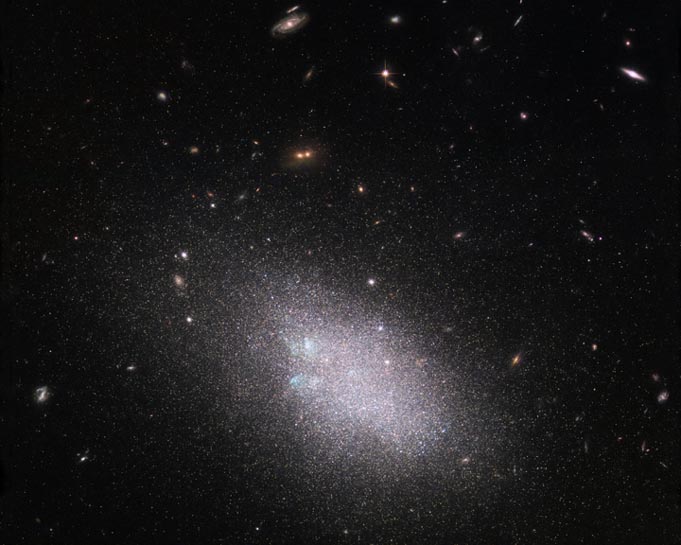
Dwarf galaxy
RA 1h 7m 24.04s Dec 16° 41' 16.21"
Pisces
15 million light years
1.9 x 1.3 arcmin
2.78 x 2.31 arcminutes
North is 59.9° right of vertical
ESA/Hubble & NASA; the LEGUS team, B. Tully, D. Calzetti, Ack: Judy Schmidt
September 2, 2019
ABOUT
THIS IMAGE:
This picture shows a dwarf galaxy named UGC 685. Such galaxies are small and contain just a tiny fraction of the number of stars in a galaxy like the Milky Way. Dwarf galaxies often show a hazy structure, an ill-defined shape, and an appearance somewhat akin to a swarm or cloud of stars - and UGC 685 is no exception to this. Classified as an SAm galaxy - a type of unbarred spiral galaxy - it is located about 15 million light-years from Earth.
These data were gathered under the NASA/ESA Hubble Space Telescope's LEGUS (Legacy ExtraGalactic UV Survey) Program, the sharpest and most comprehensive ultraviolet survey of star-forming galaxies in the nearby Universe.
LEGUS
is imaging 50 spiral and dwarf galaxies in our cosmic neighborhood in
multiple colors using Hubble's Wide Field Camera 3. The survey is picking
apart the structures of these galaxies and resolving their constituent
stars, clusters, groups, and other stellar associations. Star formation
plays a huge role in shaping its host galaxy; by exploring these targets
in detail via both new observations and archival Hubble data, LEGUS will
shed light on how stars form and cluster together, how these clusters
evolve, how a star's formation affects its surroundings, and how stars
explode at the end of their lives.